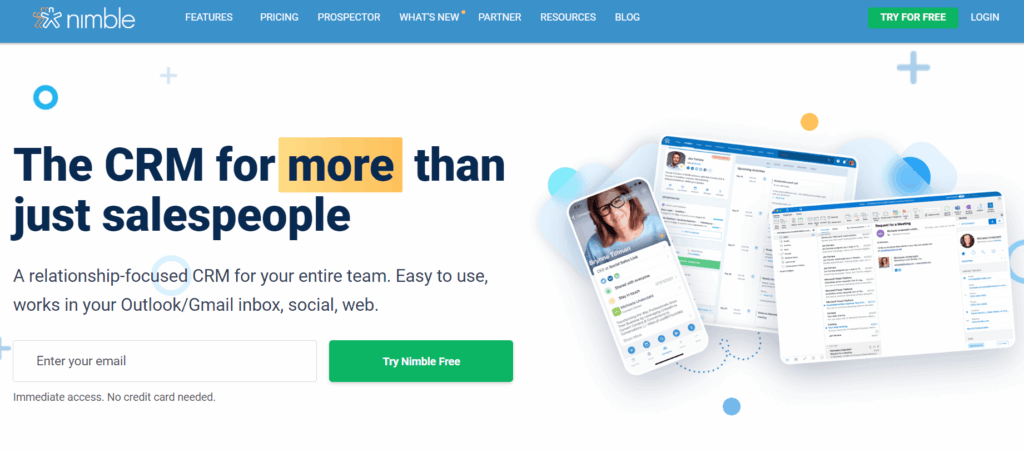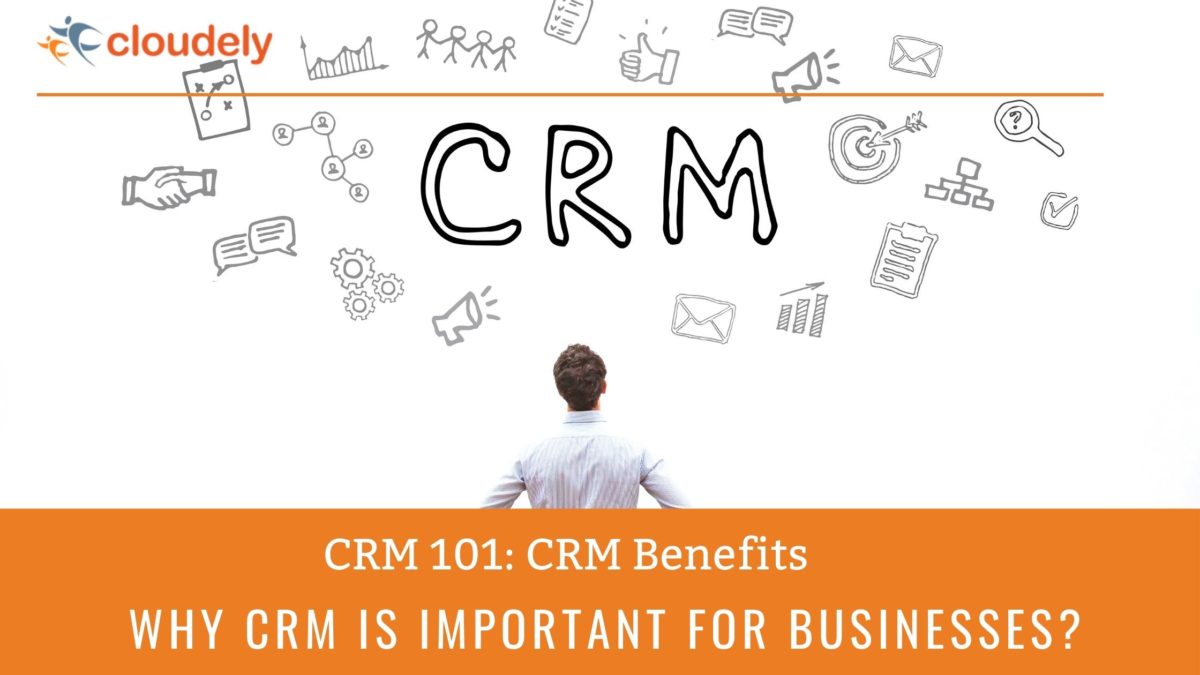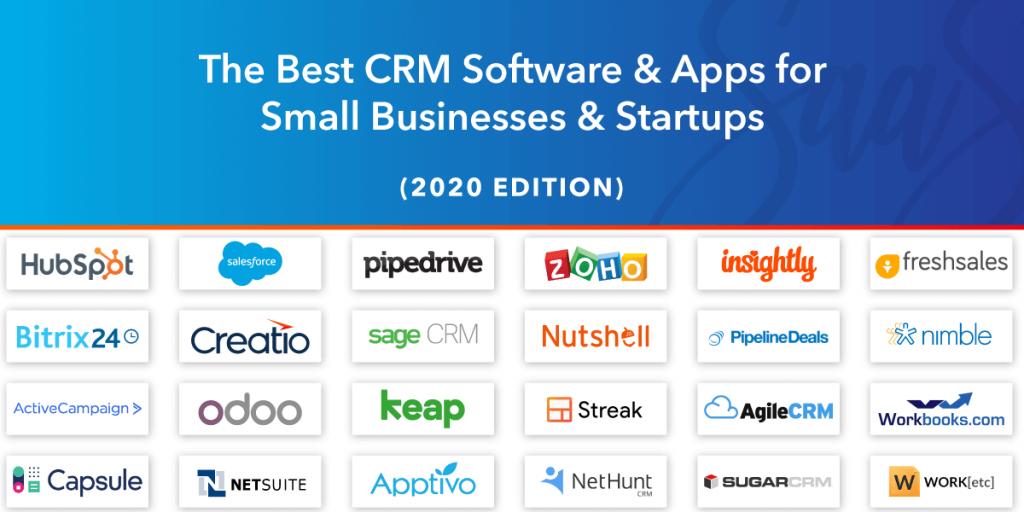
Small Business CRM Setup Guide: Your Step-by-Step Blueprint to Customer Relationship Success
Starting a small business is an adventure, a rollercoaster of excitement, challenges, and the constant pursuit of growth. In the midst of all the hustle, one thing remains paramount: building and nurturing strong customer relationships. That’s where a Customer Relationship Management (CRM) system comes into play. Think of it as your central hub for everything customer-related – from initial contact to ongoing support. This comprehensive guide will walk you through the process of setting up a CRM for your small business, transforming your customer interactions, and propelling your business toward greater success. We’ll cover everything from choosing the right system to implementing it effectively, ensuring you have the tools and knowledge to thrive.
Why Your Small Business Needs a CRM
Before diving into the ‘how,’ let’s address the ‘why.’ Why should a small business, often operating with limited resources, invest in a CRM? The answer lies in the multitude of benefits it offers:
- Improved Customer Relationships: A CRM allows you to centralize customer data, providing a 360-degree view of each customer. This enables personalized interactions, better understanding of their needs, and proactive customer service.
- Increased Sales: By tracking leads, managing sales pipelines, and automating follow-ups, a CRM can significantly boost sales efficiency and conversion rates.
- Enhanced Productivity: Automating repetitive tasks, such as data entry and email sending, frees up your team to focus on more strategic activities.
- Better Decision-Making: CRM systems provide valuable insights into customer behavior, sales trends, and marketing campaign performance, empowering data-driven decisions.
- Streamlined Communication: Centralized communication history ensures that everyone on your team has access to the same information, eliminating confusion and improving collaboration.
- Data Security and Compliance: Many CRM systems offer robust security features to protect sensitive customer data and help you comply with data privacy regulations.
In essence, a CRM is not just a piece of software; it’s an investment in your business’s future, fostering customer loyalty, driving revenue growth, and optimizing overall efficiency. Don’t think of it as an optional extra; it’s a necessity for sustainable success.
Choosing the Right CRM for Your Small Business
The market is flooded with CRM solutions, each with its own features, pricing models, and target audience. Choosing the right one can seem daunting, but by carefully considering your needs and priorities, you can narrow down the options and find the perfect fit. Here’s how to approach the selection process:
1. Define Your Needs and Goals
Before you start comparing CRM systems, take some time to define your specific needs and goals. Ask yourself the following questions:
- What are your primary business objectives? Are you focused on increasing sales, improving customer service, or streamlining marketing efforts?
- What are your current pain points? Identify the challenges you’re facing in managing customer relationships, sales processes, or marketing campaigns.
- What features are essential for your business? Do you need sales automation, marketing automation, customer support ticketing, or integration with other tools?
- How many users will need access to the CRM? This will impact pricing and the scalability of the system.
- What is your budget? CRM systems range in price from free to thousands of dollars per month. Determine a realistic budget that aligns with your business’s financial capabilities.
Answering these questions will help you create a clear picture of your requirements, which will be invaluable in evaluating different CRM options.
2. Research CRM Options
Once you know what you’re looking for, it’s time to start researching different CRM systems. Here are some popular options, each with its own strengths and weaknesses:
- HubSpot CRM: A popular choice for small businesses, HubSpot CRM offers a free version with basic features and paid plans with advanced functionalities. It’s known for its user-friendliness and comprehensive marketing automation tools.
- Zoho CRM: Zoho CRM provides a wide range of features at competitive prices, making it a good option for businesses looking for a feature-rich CRM without breaking the bank. It offers robust customization options and integrations.
- Salesforce Sales Cloud: A leading CRM platform, Salesforce is a powerful and versatile option, but it can be complex and expensive, making it more suitable for larger businesses with more complex needs.
- Pipedrive: Designed specifically for sales teams, Pipedrive focuses on sales pipeline management and lead tracking. It’s known for its intuitive interface and ease of use.
- Freshsales: Freshsales is a feature-rich CRM with a strong emphasis on sales and customer service. It offers features like built-in phone and email integration.
When researching, read online reviews, compare features, and consider free trials to get a feel for each system.
3. Evaluate Key Features
As you evaluate CRM options, pay close attention to the following features:
- Contact Management: The ability to store and manage contact information, including names, email addresses, phone numbers, and other relevant details.
- Lead Management: Tools for capturing, tracking, and nurturing leads throughout the sales pipeline.
- Sales Automation: Features that automate repetitive sales tasks, such as email follow-ups and task reminders.
- Sales Pipeline Management: Visual representations of your sales pipeline, allowing you to track deals and identify bottlenecks.
- Reporting and Analytics: Tools for generating reports and analyzing key performance indicators (KPIs), such as sales revenue, conversion rates, and customer satisfaction.
- Integration: The ability to integrate with other tools you use, such as email marketing platforms, accounting software, and social media channels.
- Mobile Accessibility: The ability to access and manage your CRM data on the go.
- Customization: The flexibility to customize the CRM to meet your specific needs, including adding custom fields and workflows.
- Customer Support: The availability of reliable customer support, including documentation, tutorials, and live chat or phone support.
4. Consider Pricing and Scalability
CRM pricing models vary widely. Some systems offer free versions with limited features, while others have tiered pricing plans based on the number of users or the features included. Consider your current needs and your anticipated growth when choosing a pricing plan. Make sure the system can scale with your business as you grow, adding more users, features, and data.
5. Prioritize User-Friendliness
A CRM is only effective if your team actually uses it. Choose a system with a user-friendly interface and intuitive navigation. Look for features like drag-and-drop functionality, customizable dashboards, and easy-to-understand reporting. A CRM that’s difficult to learn or use will be a waste of money and time.
Setting Up Your CRM: A Step-by-Step Guide
Once you’ve chosen your CRM, it’s time to set it up. This can seem daunting, but by following a structured approach, you can ensure a smooth and successful implementation. Here’s a step-by-step guide:
1. Planning and Preparation
Before you start configuring your CRM, take some time to plan your implementation. This will save you time and effort in the long run. Consider the following:
- Data Migration: Identify the data you need to import into the CRM, such as customer contact information, sales data, and marketing campaign results. Organize your data in a spreadsheet or other format that can be easily imported.
- Team Training: Plan how you will train your team to use the CRM. This may involve creating training materials, conducting workshops, or providing one-on-one coaching.
- Workflow Design: Map out your key business processes, such as lead generation, sales pipeline management, and customer support. Design workflows within the CRM to automate these processes and improve efficiency.
- Security and Permissions: Determine who will have access to the CRM and what level of access they will have. Set up user roles and permissions to protect sensitive data.
- Timeline: Create a realistic timeline for implementation, including data migration, training, and testing.
2. Data Import and Organization
Importing your data into the CRM is a crucial step. Here’s how to do it effectively:
- Clean Your Data: Before importing, clean your data to remove duplicates, correct errors, and standardize formatting. This will ensure accurate reporting and a better user experience.
- Choose the Right Import Method: Most CRM systems offer various import methods, such as importing from a CSV file, connecting to another database, or using a third-party integration. Choose the method that best suits your data and your CRM.
- Map Your Fields: When importing, map your data fields to the corresponding fields in the CRM. This ensures that your data is imported correctly.
- Test Your Import: After importing your data, test it to ensure that it has been imported correctly. Check for errors and make any necessary corrections.
- Organize Your Data: Once your data is imported, organize it in a logical and consistent manner. This includes creating custom fields, tagging contacts, and segmenting your customer base.
3. Customization and Configuration
Customize your CRM to meet your specific business needs. This may involve:
- Adding Custom Fields: Add custom fields to store information that is specific to your business, such as industry, product preferences, or customer lifetime value.
- Customizing Workflows: Customize workflows to automate your key business processes, such as lead assignment, email follow-ups, and task reminders.
- Setting Up Integrations: Integrate your CRM with other tools you use, such as email marketing platforms, accounting software, and social media channels.
- Creating Reports and Dashboards: Create reports and dashboards to track key performance indicators (KPIs) and gain insights into your business performance.
- Configuring User Roles and Permissions: Set up user roles and permissions to control who has access to different features and data.
4. Team Training and Adoption
Training your team is essential for successful CRM adoption. Here’s how to ensure your team is equipped to use the system effectively:
- Develop a Training Plan: Create a training plan that covers all aspects of the CRM, including data entry, lead management, sales pipeline management, and reporting.
- Provide Training Materials: Create training materials, such as user manuals, video tutorials, and cheat sheets, to help your team learn the system.
- Conduct Training Sessions: Conduct training sessions for your team, either in person or online. Use a combination of lectures, demonstrations, and hands-on exercises.
- Provide Ongoing Support: Provide ongoing support to your team, including answering questions, troubleshooting issues, and providing refresher training.
- Monitor Adoption: Monitor CRM usage and identify any team members who are not actively using the system. Provide additional support or training as needed.
5. Testing and Refinement
Before fully launching your CRM, test it thoroughly to ensure that it’s working as expected. This may involve:
- Testing Data Entry: Test data entry to ensure that data is being entered correctly and that all fields are working as expected.
- Testing Workflows: Test workflows to ensure that they are automating your business processes correctly.
- Testing Integrations: Test integrations with other tools to ensure that data is being synchronized correctly.
- Gathering Feedback: Gather feedback from your team to identify any areas for improvement.
- Making Adjustments: Make any necessary adjustments to your CRM based on testing results and feedback.
Maximizing CRM Use for Your Small Business
Once your CRM is set up, the real work begins: using it effectively to drive your business forward. Here are some tips for maximizing your CRM’s potential:
1. Embrace Data-Driven Decision-Making
Your CRM is a treasure trove of data. Use it to make informed decisions about your sales, marketing, and customer service strategies. Analyze your data to identify trends, track performance, and measure the effectiveness of your campaigns. Regularly review your reports and dashboards to gain insights into your business and make data-driven adjustments.
2. Personalize Customer Interactions
A CRM allows you to personalize your customer interactions based on their individual needs and preferences. Use the data you’ve collected to tailor your communications, offer personalized recommendations, and provide proactive customer service. This will help you build stronger relationships with your customers and increase their loyalty.
3. Automate Tasks to Save Time
CRM systems are designed to automate repetitive tasks, such as data entry, email sending, and task reminders. Take advantage of these automation features to free up your team’s time and allow them to focus on more strategic activities. Automate as many tasks as possible to improve efficiency and productivity.
4. Integrate with Other Tools
Integrate your CRM with other tools you use, such as email marketing platforms, accounting software, and social media channels. This will streamline your workflow, eliminate data silos, and provide a more complete view of your customer. Integration makes it easier to manage your customer data and provides a seamless experience for your team.
5. Regularly Review and Optimize
Your CRM setup is not a one-time event; it’s an ongoing process. Regularly review your CRM’s performance, identify any areas for improvement, and make necessary adjustments. This may involve adding new features, customizing workflows, or training your team on new functionalities. By continuously optimizing your CRM, you can ensure that it remains a valuable asset for your business.
Common Challenges and How to Overcome Them
While CRM systems offer numerous benefits, implementing and using them effectively can present challenges. Here are some common obstacles and how to overcome them:
1. Data Migration Issues
Migrating data from existing systems can be a complex process. To avoid issues:
- Clean Your Data: Before importing, clean your data to remove duplicates, correct errors, and standardize formatting.
- Plan Ahead: Plan your data migration carefully and allocate sufficient time and resources.
- Test Your Import: Test your import to ensure that data has been imported correctly.
- Seek Expert Help: If needed, seek help from a CRM consultant or data migration specialist.
2. User Adoption Resistance
Resistance to change is a common challenge. To encourage user adoption:
- Involve Your Team: Involve your team in the selection and implementation process to gain their buy-in.
- Provide Adequate Training: Provide comprehensive training and ongoing support.
- Highlight Benefits: Emphasize the benefits of using the CRM, such as improved efficiency and better customer relationships.
- Lead by Example: Encourage managers and leaders to actively use the CRM and demonstrate its value.
3. Lack of Data Accuracy
Inaccurate data can undermine the effectiveness of your CRM. To ensure data accuracy:
- Implement Data Validation Rules: Implement data validation rules to prevent users from entering incorrect data.
- Train Your Team: Train your team on proper data entry procedures.
- Regularly Review Data: Regularly review your data and correct any errors.
- Use Integrations: Integrate your CRM with other tools to automatically update data.
4. Integration Difficulties
Integrating your CRM with other tools can sometimes be challenging. To overcome integration difficulties:
- Choose Compatible Systems: Choose CRM systems that integrate well with the other tools you use.
- Follow Documentation: Follow the documentation and instructions provided by the CRM and the other tools.
- Test Your Integrations: Test your integrations to ensure that data is being synchronized correctly.
- Seek Technical Support: If needed, seek technical support from the CRM provider or the other tool providers.
5. Overwhelming Complexity
Some CRM systems can be complex and overwhelming, especially for small businesses. To avoid overwhelming your team:
- Start Simple: Start with a basic setup and gradually add features as needed.
- Focus on Essential Features: Focus on the features that are most important for your business.
- Customize Your Interface: Customize the user interface to make it easier to use.
- Provide Ongoing Support: Provide ongoing support to your team to help them learn the system.
Conclusion: Embracing the CRM Advantage
Setting up a CRM for your small business is a significant step toward building stronger customer relationships, increasing sales, and driving overall growth. While the process may seem complex initially, the benefits of implementing a well-chosen and effectively managed CRM system far outweigh the effort. By following the steps outlined in this guide, you can confidently choose the right CRM, set it up for success, and empower your team to thrive. Remember that the journey doesn’t end with the initial setup; it’s an ongoing process of optimization and refinement. Embrace the CRM advantage, and watch your small business flourish.
The world of customer relationship management is constantly evolving. New features, integrations, and best practices are emerging all the time. Stay informed about the latest trends, and be willing to adapt your CRM strategy as your business grows and your needs change. The more you invest in your CRM, the more it will reward you with loyal customers, increased revenue, and a thriving business.

